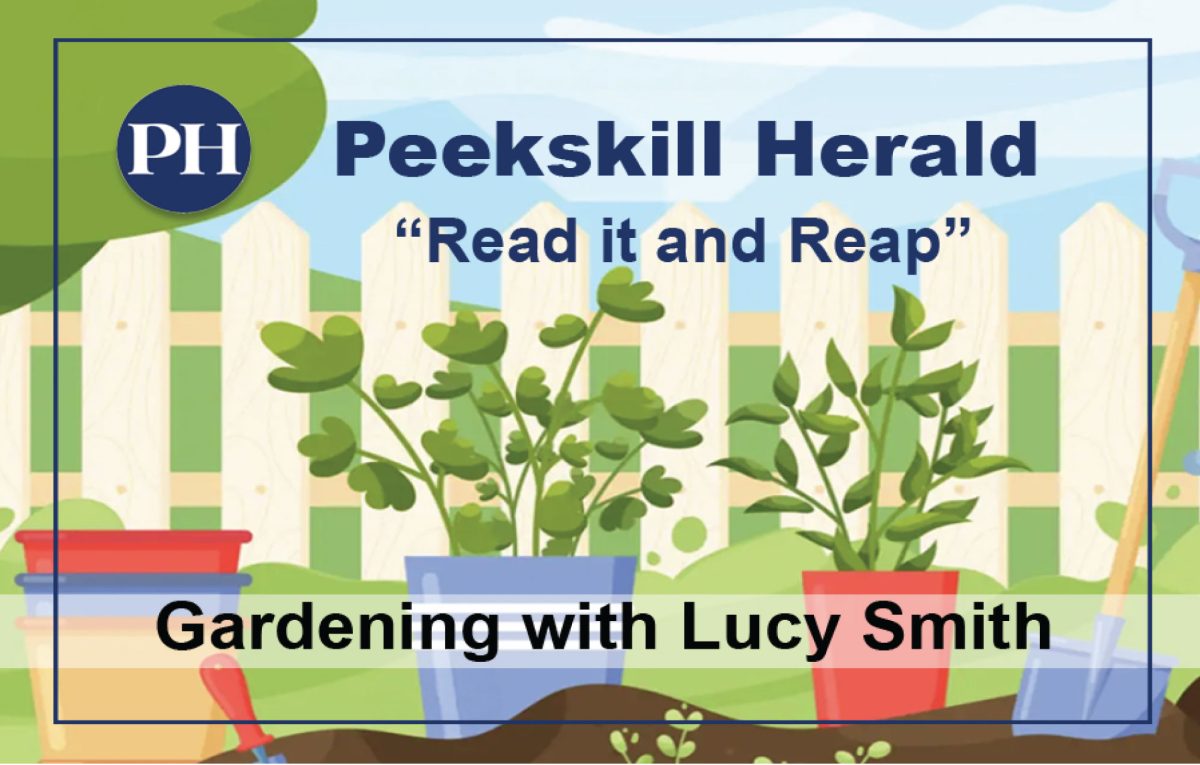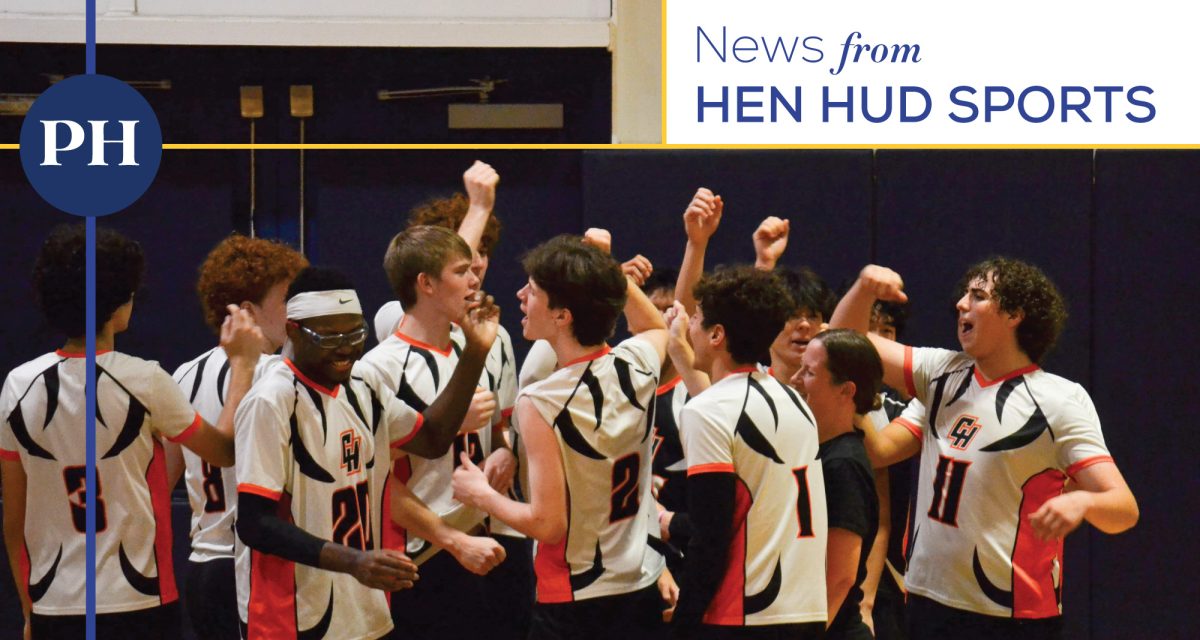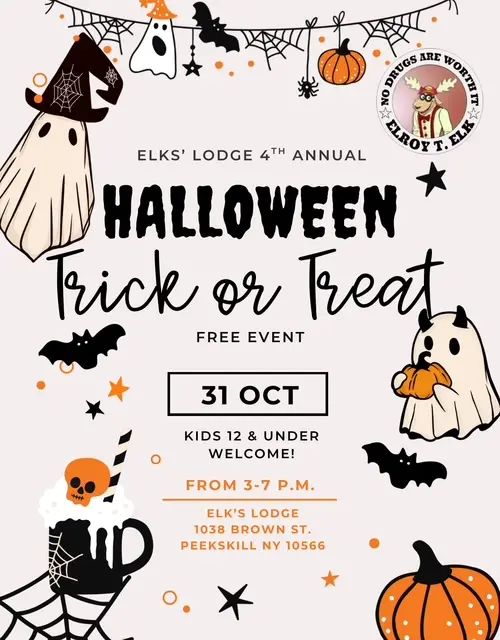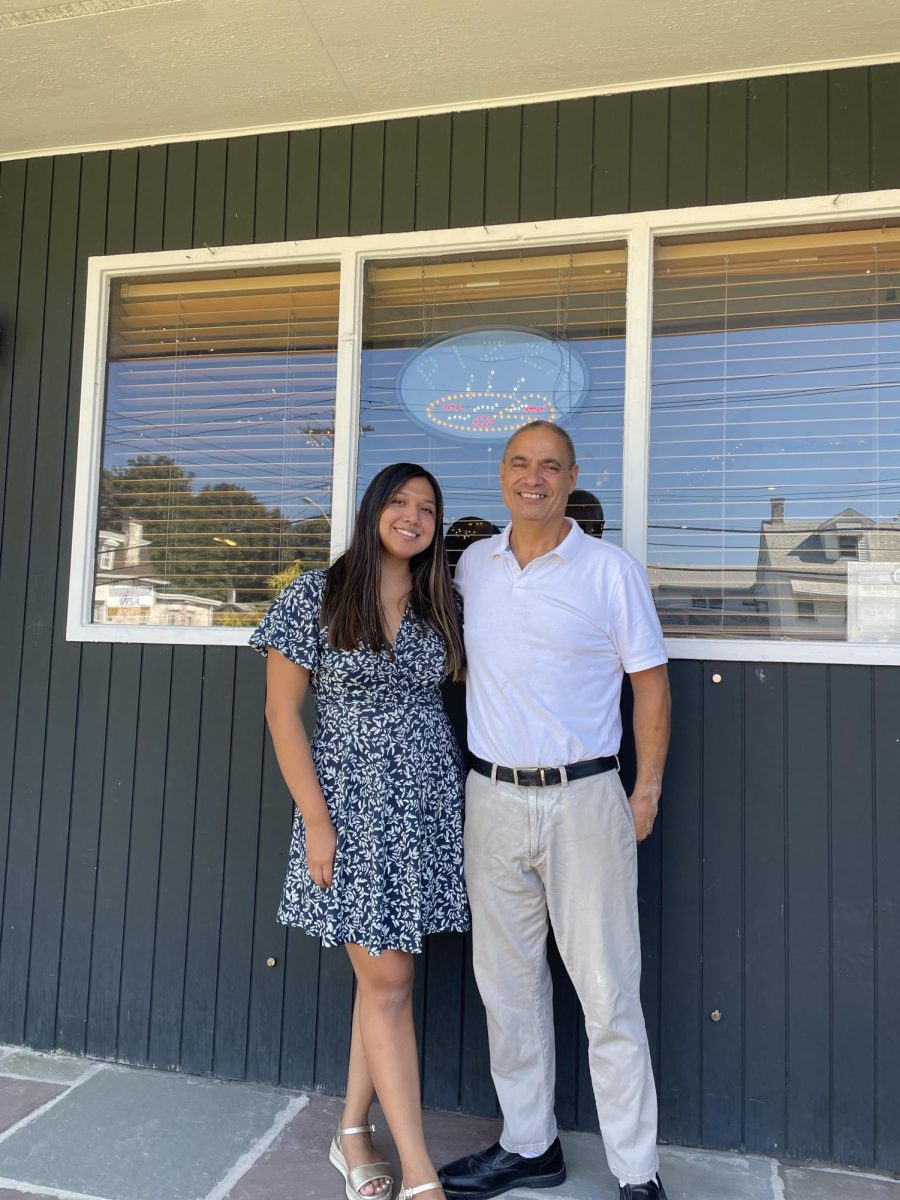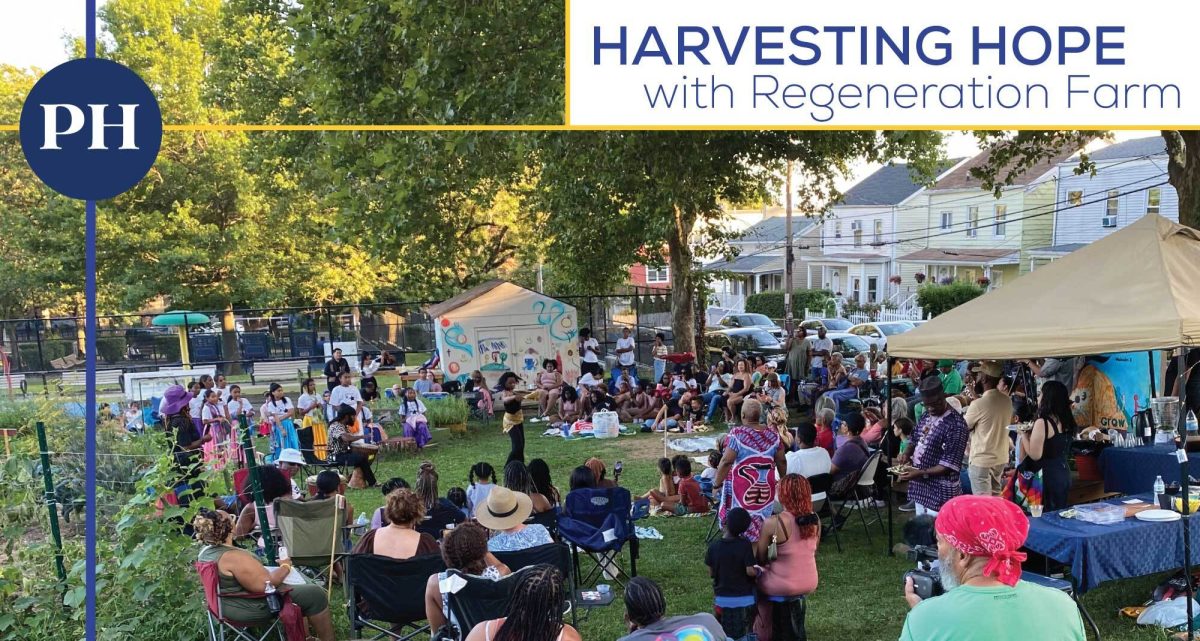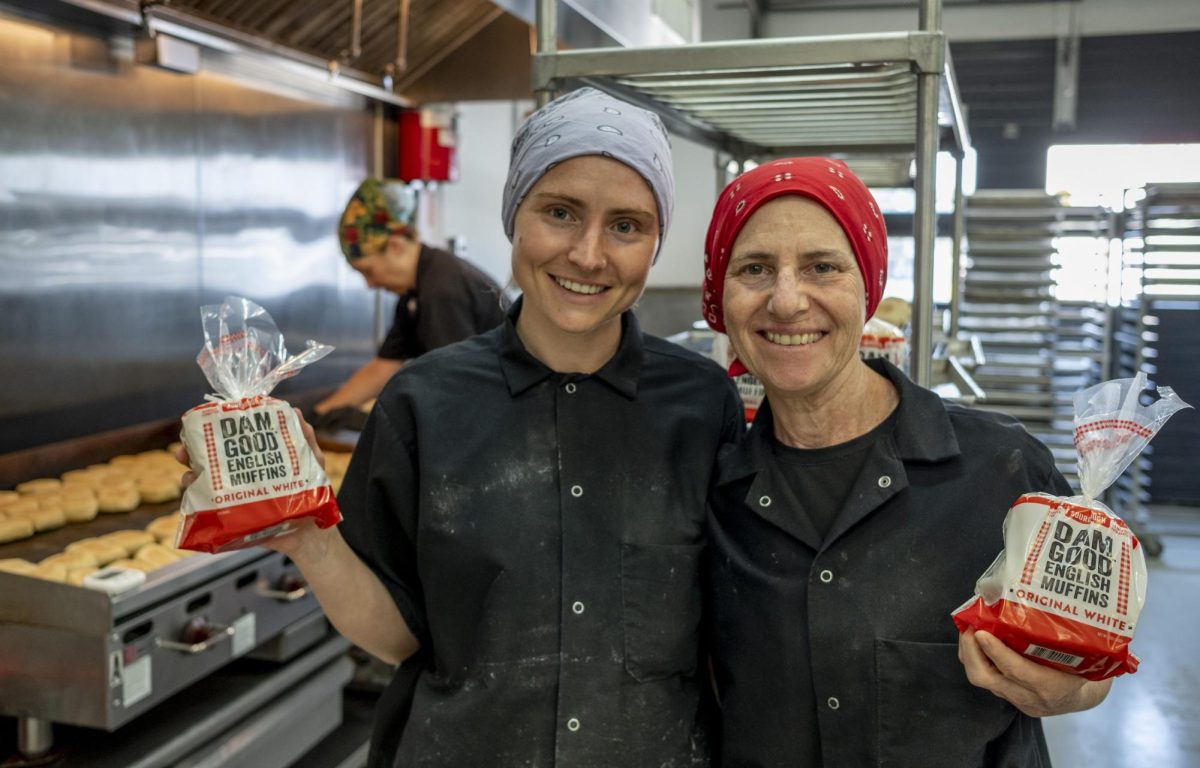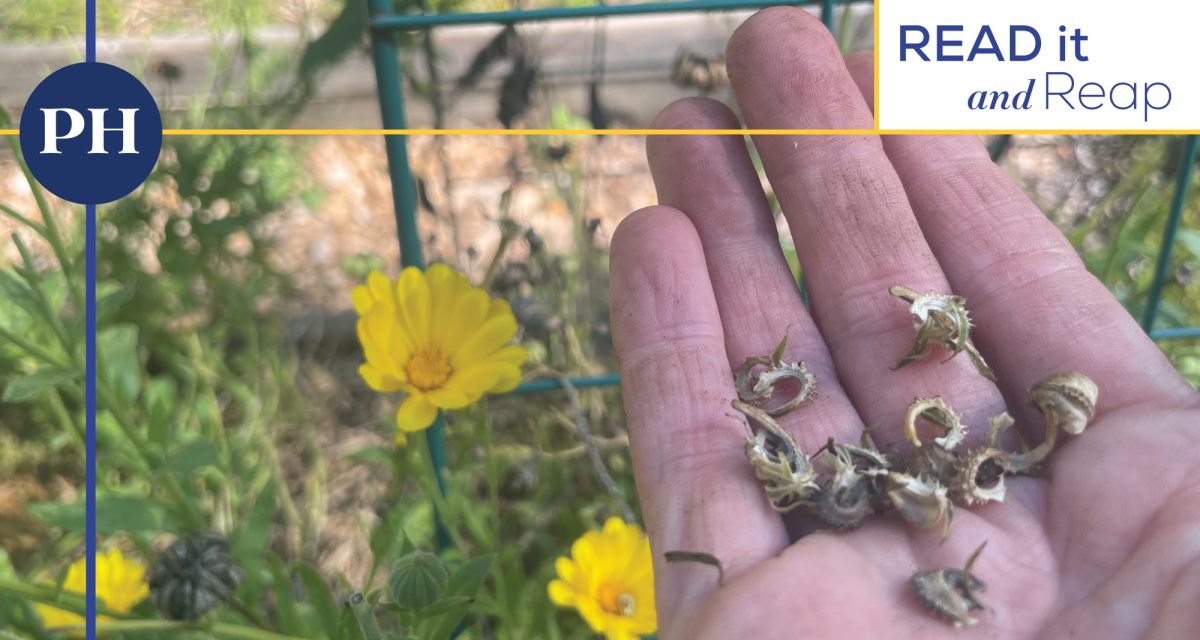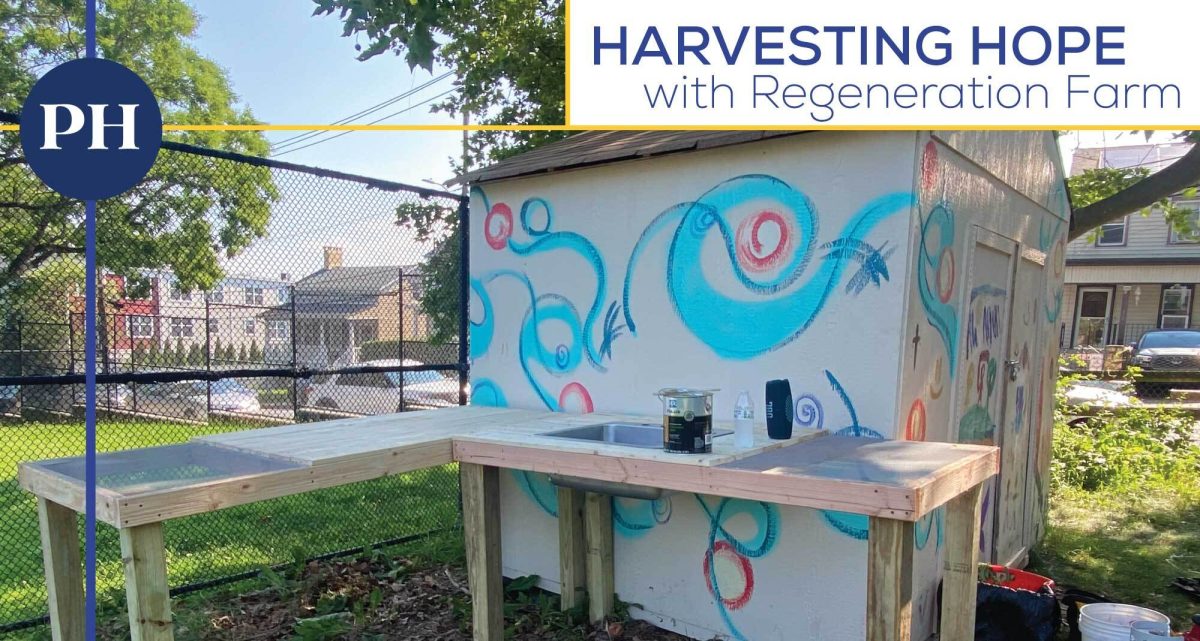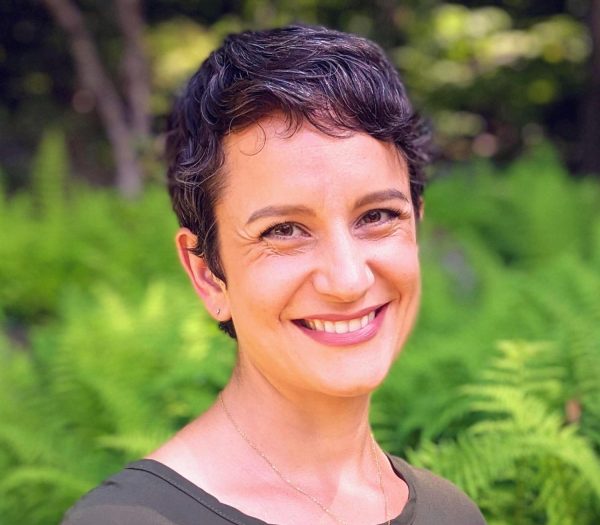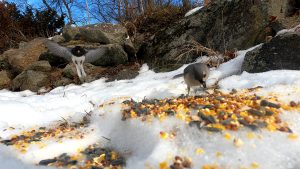
In the depths of winter, birds can provide color and movement to our natural outdoor spaces. As well as entertaining watching humans, they add to the local ecosystem by spreading seed, aerating the soil, and keeping invertebrates in check. But besides putting out birdseed, how can we attract and support generations of these lively visitors?
Birdfood: Berries, Nuts … and Caterpillars
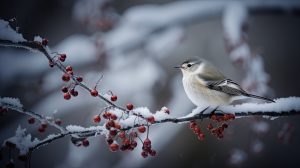
Birds, especially the songbirds whose bright feathers and quick movements enliven our winter days, eat berries, nuts, seeds, nectar, and insects. The plants that provide this food are usually put in the ground in spring or fall to optimize root establishment without the stress of extreme heat or cold, and to ensure that the organism has enough time to fruit. Keep in mind, however, that larger trees and shrubs may take years to get big and healthy enough to produce food for humans and birds alike–the best way to know is to research the individual plants that are mentioned.
In all cases, it’s helpful to remember that native birds, like the American robin, cardinal, bluejay and ruby-throated hummingbird, co-evolved with the landscape around them. This means the food offered by native plants has been tailored over eons to offer the best nutrition (and therefore the best shot at survival) for the animals depending on them. And since birds are exceptionally talented at broadcasting seed, why not ensure they’re going to spread optimal varieties of plants?
Some gardeners may wish at the height of the summer they weren’t competing with birds, but the truth is that our avian friends will flock to many of the berries we humans also relish. Good species to plant that provide delicious fruit in the warm months include the crab apple, low and high bush blueberry, cherry (including the native pin cherry), blackberry, strawberry (including the unparalleled native Fragaria virginiana), raspberry, serviceberries, and currants. Among the birds that love them are mockingbirds, catbirds, and robins. But if you don’t want to share your “people-berries”…
Consider planting landscaping shrubs and trees such as magnolia, dogwood, hawthorn, viburnum, hollies (American, inkberry, winterberry), and Eastern red cedar which all produce bird-approved berries in the fall that stay on the bough through the winter, creating a “cold-weather bird pantry”. Birds that winter around here, like cardinals, cedar waxwings, thrushes and chickadees, are able to eat many of these berries only after they’ve been frozen.
For birds to feast on nuts and seeds in the fall, plant switchgrass (Panicum virgatum), amaranth, corn, and ever-popular sunflowers during the spring. During your fall clean-up, spare flowerheads full of seed, especially of echinacea, aster and goldenrod. Birds that need this type of food include sparrows, goldfinches, juncos, mourning doves, and titmice.
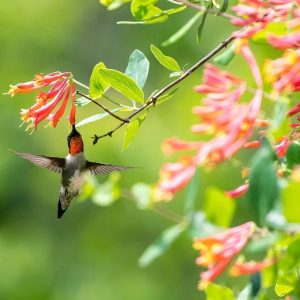
For nectar, trumpet-shaped red flowers are the way to go, especially to support ruby-throated hummingbird populations. Some particularly nutritious native choices are cardinal flower, bee balm, butterfly weed (Asclepias tuberosa), red columbine and lonicera sempervivens (also known as the native coral honeysuckle; while other lonicera species offer sweet-smelling flowers, they will quickly overrun the ecosystem). Other birds that drink nectar include orioles, grosbeaks, tanagers, and warblers.
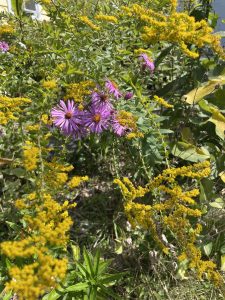
A critically overlooked food source for baby birds are insect young, specifically caterpillars. A pair of Carolina chickadees will feed their brood, on average six chicks, 6,000 to 9,000 caterpillars! Caterpillars are soft and protein-rich enough to be the perfect food for baby birds–other types of food may damage their developing bodies or not provide enough nutrients.
Oaks, goldenrod, and asters are caterpillar havens. These are also known as keystone species because so many other organisms rely on them. Fortunately for you and the many beings relying on them, they often appear in our yards as volunteers carried by wind or animal waste at no cost. Familiarize yourself with the appearance of these essential plants and give them room in your yard.
It bears repeating that caterpillars–and the moths and butterflies that make them–do not easily survive in yards where they don’t have nooks and crannies. If you want birds, leave the leaves! They make perfect cover for insect larvae.
Additional Avian Needs: Cover and Nesting
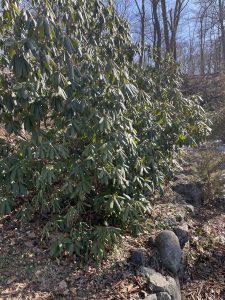
In addition to food, birds need cover to hide from predators. To achieve a variety of heights as well as degrees of openness, consider underplanting taller trees with shrubs and shorter trees. Think of your yard as a thriving city, with mixed zoning for short buildings and skyscrapers to attract a variety of avian residents!
Winter cover includes evergreens like pine, fir, spruce, yew and broadleaf evergreens like bayberry, rhododendron, mountain laurel, and leucothoe. Note that creating spaces for songbirds may also attract their predators–especially red tailed hawks, American kestrels, and even peregrine falcons. Consider the opportunity to see these raptors at work as an added bonus and a sign that your space is a true wildlife habitat!
Birds prefer to raise their young in well-protected areas. Some, like bluebirds and housemartins, like to nest in boxes, but the majority will build their nests in branches. Thorny and rambling shrubs like Carolina and swamp roses, as well as aromatic sumac, eventually create hedges with many protected pockets. To this end, an overtidy yard may not serve your goals of attracting birds, but creating a pile of yard waste to have ample cubbyholes and niches will.
The Extras: What your garden may not provide
A yard without a birdbath, birdhouse, or a traditional bird feeder will still offer haven to many avian species. If you want to go the extra mile, however, here are some recommendations:
- Water: A source of water, whether a simple saucer or an installed pond, attracts thirsty birds. While this feature may not be feasible in freezing temperatures, many birds need water to stay clean and disease-free.
- Man-made bird houses: If you’re looking to attract a specific type of bird, research its nesting and roosting needs. Cornell Labs nestwatch.org has a great way to search birdhouse plans by individual species: Right Bird, Right House.
Take a little time this winter to ensure lifetimes of happy chicks and hours of birdwatching by planting your yard well!
Want to learn more about good native species to sow? Interested in a list of heirloom vegetables for your Spring 2025 garden? Or do you want more information on which weeds are truly a pest? Email her at [email protected] and look out for answers in a forthcoming “Ask a Gardener” column!




